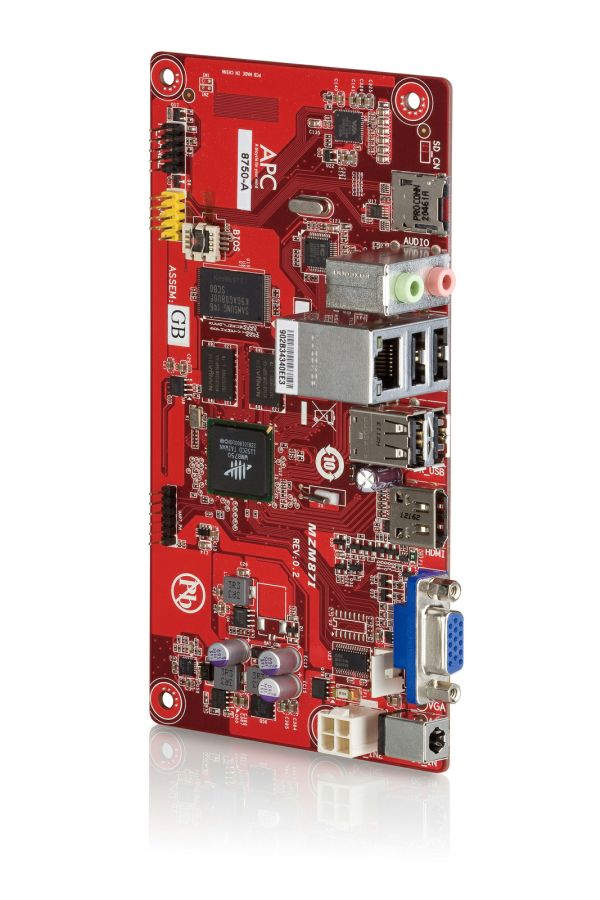VIA Technologies is entering Raspberry Pi territory with its latest product — the APC. It’s a $49 barebones computer designed to run Google Android. The system includes a processor, memory, storage, and a range of ports for connectivity — but no case.
You can slip the Neo-ITX system board into a computer case designed for a Mini-ITX or MicroATX motherboard, but that’ll probably drive up the price considerably. I suspect we may also start to see some homemade solutions soon.

The APC is meant for use as a desktop PC, but it’s awfully tiny, measuring just 6.7″ x 3.3″.
Under the hood the APC is powered by a VIA WonderMedia 8750 800 MHz ARM11 processor, 512MB of DDR3 memory, and 2GB of flash storage. The chip supports 1080p HD video playback, H.264 video encoding, and OpenGL ES 2.0 graphics.
The chipset is comparable to what you get with a Raspberry Pi. It’s not exactly a state of the art processor and won’t be able to compete with the fastest chips available today from NVIDIA, Qualcomm, Samsung, or Texas Instruments. It’s not even the fastest mobile chip from VIA. But it should be enough to provide a decent Android 2.3 experience.
I also doubt it will take long for people to find ways to install various Linux distributions on the $49 computer.
But what really sets the APC apart from the Raspberry Pi is the wide range of ports included in VIA’s little PC. It has VGA and HDMI ports, 4 USB 2.0 ports, a 10/100 Ethernet jack, headphone and mic jacks, and a microSD card slot.
The only thing really missing is WiFi, but you should be able to add a WiFi dongle using one of the available USB ports.
VIA says the APC uses 4W of power when idle and 13.5W at full load.
The APC will be available for purchase starting in July. You can register for information about pre-orders at the APC website.
The folks at Netbook News got a chance to check out a pre-release version.








$38 shipping for a $49 board is a dealbreaker.
i would like to see if this could run boxee or something like that. or a tv type system not android at all
I don’t really see the point in this.
It is more expensive than the Pi. Admittedly it gives more ports but it is in the same category (a board).
For ~$100 you can get a Mele A1000 which is a Cortex-A8 machine (Allwinner A10) with a proper case and the ability to host a 2,5″ hard-drive. That has tripple the non-GPU performance and hacker friendly. Its GPU is a Mali400 which is likely much more powerful then the Wondermedia.
Some confusion over the supported display resolution – the chip is apparently capable of 1080p, but https://apc.io/about/ says “Resolution up to 720p”. Only having 720p would be a deal-breaker for me.
720P may be the resolution limit for features like 3D performance. Playing video isn’t always indicative of graphical performance in other areas.
As an Electronics Technician, I have a question about these new caseless computers: Are they somehow protected against ESD damage? Do they come with a grounding wrist strap for the user to wear?
They’re not suppose to be used caseless… Neo ITX is just half the size of a Mini ITX board and otherwise will fit a similar case for system builds.
Or, you can build a case yourself to suit your needs. It’s perfect for the hobby-ist…
the 512 M Ram limit is still a bit of a problem for a real desktop OS like Ubuntu , but months after months ARM is on the Way to kill the WINTEL
This ARM11 SOC will never run Ubuntu, LibreOffice and such with acceptable speed, never mind the 512MB RAM.
You would need a dual-core Cortex-A9 SOC with at least 1GB DDR3-800Mhz RAM and speedy flash/hdd to get acceptable speed.
Depends on what you use it for. I can imagine setting up a bunch of these as Ubuntu (LAMP ~ Linux, Apache, MySQL, PHP) servers, or storing one in the attic for running my security cameras. Not everyone wants the latest/greatest/fastest… some of us just want affordable, flexible and small…
Interesting. The power is a bit high for the specs though. You get double the RAM vs a Pi which does help for use as a general purpose computer. And gain some onboard flash, but lose the SD slot for a MicroSD. Have to wait to see if it retains the ability to boot from the SD and be unbrickable like the Pi. You gain VGA and two USB ports (and a header for two more?) but lose the camera, LVDS and GPIO options.